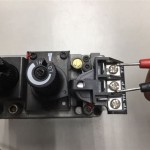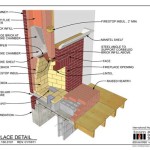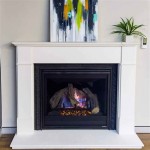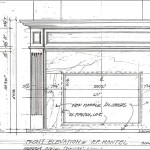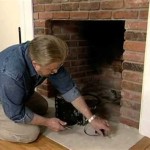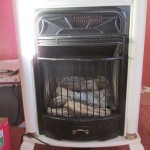Fireplace Damper Repair Cost: A Comprehensive Guide
The fireplace damper is a crucial component of a functioning fireplace system. Its primary role is to seal the chimney when the fireplace is not in use, preventing heat loss and unwanted drafts. A malfunctioning damper can lead to increased energy bills, potential water damage, and even allow pests or debris to enter the home. Understanding the costs associated with fireplace damper repair is essential for homeowners to budget effectively and ensure the long-term efficiency and safety of their fireplace.
This article provides a detailed overview of the factors that influence fireplace damper repair costs, the different types of dampers, common problems that necessitate repair, and preventative measures to extend the life of a damper. This information is intended to equip homeowners with the knowledge needed to make informed decisions regarding damper repair and maintenance.
Factors Influencing Fireplace Damper Repair Costs
Several factors contribute to the overall cost of repairing a fireplace damper. These factors can vary depending on the specific situation, the type of damper, and the extent of the damage.
Type of Damper: The type of damper significantly impacts repair costs. Throat dampers, located just above the firebox, are the most common type. Top-sealing dampers, installed at the top of the chimney, typically cost more to repair or replace due to their location and more complex mechanism. Chimney cap dampers, a variation of top-sealing dampers, also tend to be more expensive to address. Each type requires different tools, expertise, and potential replacement parts, which directly influence the overall expense.
Extent of the Damage: The severity of the damage to the damper is a major cost determinant. Minor issues, such as a slightly warped damper door or a loose handle, may require simple repairs that can be relatively inexpensive. However, more significant problems, such as a severely rusted or broken damper, may necessitate a complete replacement, which is a more costly undertaking. The more extensive the damage, the more labor and materials will be required, leading to higher repair bills.
Accessibility: The ease of access to the damper also affects the cost of repair. If the damper is easily accessible within the firebox, the repair process will likely be straightforward and less time-consuming. However, if the damper is located higher up in the chimney or obstructed by other components, accessing it will require more specialized equipment and labor, increasing the overall cost. Difficult-to-reach dampers may necessitate the use of ladders, scaffolding, or even specialized chimney cleaning tools, which can add to the expense.
Labor Costs: Labor costs constitute a significant portion of the overall repair expense. The hourly rate for a qualified chimney sweep or fireplace technician can vary depending on location, experience, and the complexity of the job. It is crucial to obtain quotes from multiple reputable professionals to ensure a competitive price. Labor costs typically include the time spent diagnosing the problem, acquiring necessary materials, performing the repair, and cleaning up the work area.
Replacement Parts: The cost of replacement parts is another important factor. The type and quality of the replacement parts required will influence the overall cost. Simple components like a new damper handle or a small section of metal may be relatively inexpensive. However, a complete damper replacement, especially for a top-sealing damper, can be a more significant expense. Choosing high-quality replacement parts can ensure the longevity of the repair and prevent future issues, but it may come at a higher initial cost.
Geographic Location: The cost of living and the demand for chimney services in a particular geographic location can also influence repair costs. Areas with higher living costs tend to have higher labor rates and material costs. Additionally, if the demand for chimney services is high in a particular area, technicians may be able to charge higher rates. Obtaining quotes from local professionals is crucial to understanding the prevailing costs in your specific area.
Common Fireplace Damper Problems and Their Associated Costs
Various problems can arise with fireplace dampers, each with its own set of repair requirements and associated costs. Understanding these common issues can help homeowners anticipate potential repair expenses.
Rusted or Corroded Damper: Rust and corrosion are common problems, particularly in older fireplaces. Moisture and condensation can accumulate in the chimney, leading to rust formation on the metal components of the damper. Minor surface rust may be treatable with cleaning and rust removal products, but severe corrosion can weaken the damper and necessitate replacement. The cost of rust removal can range from $50 to $150, while damper replacement can range from $200 to $500 or more, depending on the type of damper and installation costs.
Warped Damper Door: Over time, the damper door can become warped due to exposure to high temperatures. A warped door may not seal properly, leading to heat loss and drafts. In some cases, a warped door can be straightened or repaired, but if the warping is severe, replacement may be necessary. The cost of repairing a warped door can range from $75 to $200, while replacement costs can be higher.
Broken Damper Handle or Mechanism: The damper handle or the mechanism that controls the damper can break or malfunction. This can prevent the damper from opening or closing properly. A broken handle may be replaceable, but a damaged mechanism may require more extensive repairs or even damper replacement. The cost of handle replacement can range from $30 to $100, while more complex mechanism repairs can range from $100 to $300.
Damper Stuck Open or Closed: Sometimes, the damper can become stuck in either the open or closed position. Debris, such as leaves, twigs, or animal nests, can accumulate in the chimney and obstruct the damper's movement. This can be resolved by cleaning the chimney and removing the obstruction. If the damper is stuck due to rust or corrosion, lubrication or rust removal products may be needed. Professional chimney cleaning can range from $150 to $300, while damper lubrication and minor repairs can cost between $50 and $150.
Chimney Obstructions: Obstructions within the chimney itself can impede the function of the damper. These obstructions can include bird nests, animal carcasses, or accumulated creosote. Removing these obstructions is essential for proper damper operation and overall chimney safety. Chimney cleaning services typically address these obstructions, with costs varying depending on the severity and location of the blockage.
Preventative Measures to Extend Damper Life and Reduce Repair Costs
Implementing preventative measures can significantly extend the life of a fireplace damper and reduce the likelihood of costly repairs. Regular maintenance and proper usage are key to ensuring the long-term functionality of the damper.
Regular Chimney Cleaning: Regular chimney cleaning is crucial for maintaining a healthy damper. Creosote buildup, debris, and animal nests can obstruct the damper's movement and contribute to corrosion. Annual chimney inspections and cleaning by a qualified professional can prevent these issues and ensure proper damper operation. Regular cleaning typically costs between $150 and $300, depending on the size and condition of the chimney.
Proper Damper Usage: Using the damper correctly is essential for preventing damage. Always ensure that the damper is fully open before lighting a fire and fully closed when the fireplace is not in use. Leaving the damper open when not in use can lead to heat loss and increase energy bills. Closing the damper when a fire is burning can create a dangerous buildup of carbon monoxide. Educating all household members on proper damper usage is essential.
Annual Inspections: Annual inspections by a qualified chimney sweep can identify potential problems early on. A professional can assess the condition of the damper, identify any signs of rust or corrosion, and recommend necessary repairs or maintenance. Early detection and intervention can prevent minor issues from escalating into more costly problems. Chimney inspections typically cost between $75 and $150.
Waterproofing the Chimney: Moisture is a major contributor to damper corrosion. Waterproofing the chimney can prevent water from entering and damaging the damper. Chimney waterproofing involves applying a sealant to the exterior of the chimney to prevent water penetration. While this is an additional upfront cost, waterproofing can prevent more expensive repairs in the future related to water damage and corrosion. Chimney waterproofing can range from $300 to $800, depending on the size and condition of the chimney.
Choosing the Right Damper Type: When replacing a damper, consider upgrading to a more durable and efficient model. Top-sealing dampers, for example, provide a tighter seal than traditional throat dampers and can help reduce heat loss. While top-sealing dampers may have a higher initial cost, their long-term energy savings and reduced maintenance requirements can make them a worthwhile investment. Consulting with a qualified chimney professional can help determine the best damper type for your specific needs and budget.
By understanding the factors influencing damper repair costs, recognizing common problems, and implementing preventative measures, homeowners can effectively manage their fireplace maintenance budgets and ensure the safe and efficient operation of their fireplace.

A Complete Guide To Chimney Damper Repair And It S Cost

Fireplace Damper Repair Full Service Chimney Kansas City

What Is A Chimney Damper Why It Important

Damper Repair Replacement Cherry Hill Mason S Chimney Serivce

Fireplace Damper Repair Full Service Chimney Kansas City

Chimney Dampers In Chicago Capital Corp

Save On Utility Costs Energy Top Plus Saving Damper Replacements

What Is A Chimney Damper Full Service

Inefficient Fireplace Increases Your Summer Cooling Costs Richmond Va

Don T Let A Leaky Chimney Damper Dampen Your Spring American Masonry
Related Posts

